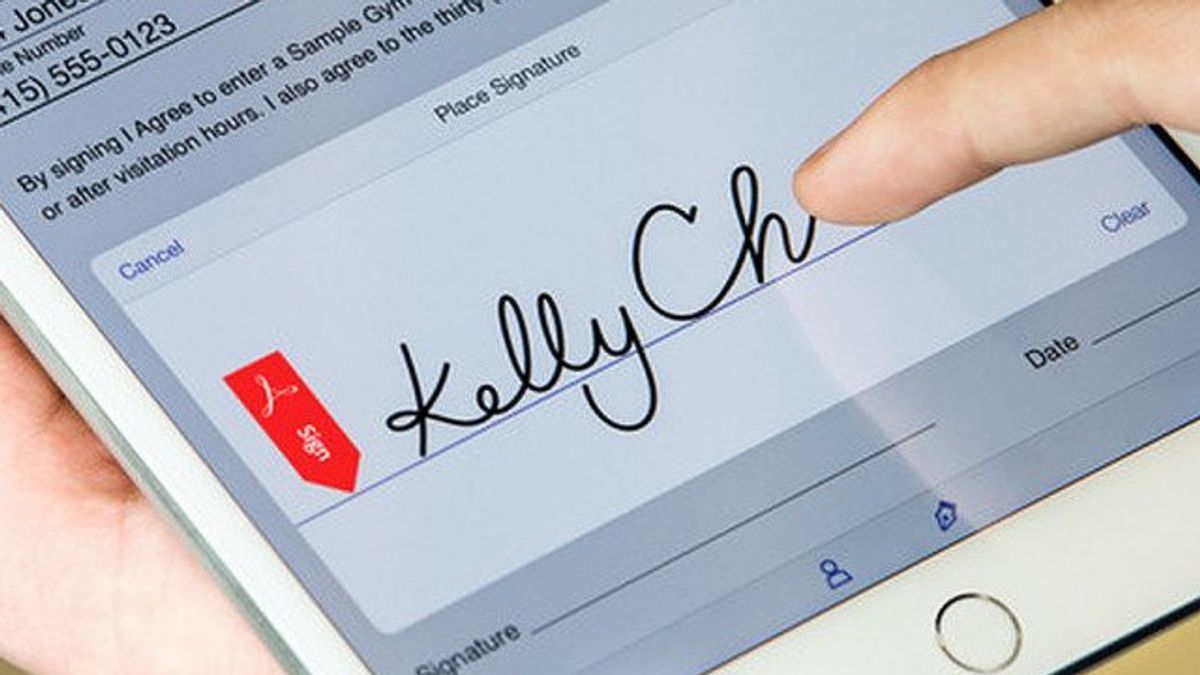JAKARTA - The Shawshank Redemption film clearly shows how digital identity verification is becoming very important in the banking world. Some parts at the end of the film starring Morgan Totaling and Tim Robbins show how the fictitious identity created by Andy Dufresne (Robbins) can create bank accounts, embezzle money from corruption, and ultimately use the money for his personal gain.
At that time, Dufresne made a fictitious identity called Randall Stephens to store money from embezzlement of the prison guards' funds, Sam Norton. It is said that somehow Stephens has official documents, such as Birth Certificates, ID Number and so on.
In this digitally-wide world, Dufresne's modus operandi of making Stephens' false identity is even more clear, especially if Dufresne has high IT capabilities. Dufresne can hack the government system and create a new identity. But at the same time, this new identity will no longer be used to create a new bank account if it does not pass in a process called digital identity verification.
Digital identity is the identity of a person formed from data about that person on the internet. This data can include formal data, such as uploading important documents belonging to the person on the internet, and shadow data (shadow data), such as a search history conducted by the person on the internet and the IP address used.
Slightly different from the identity of a person in the real world, a person's identity in cyberspace is more easily falsified, especially by people who have high IT skills. People who have high skills in digital technology can use their abilities to hack government systems, create fake population data and so on.
In the process of checking digital identity, customer formal data will be matched to the customer's shadow data. The goal is to ensure that the person who created the account at the bank is a genuine person and is not a fictitious individual as Randall Stephens in the opening story above.
Digital identity is related to digital signature where before a person can create a digital signature, he must have a verified and recognized digital identity by the competent authority. Usually, digital identity is created through a strict authentication or verification process to ensure that the person is truly who he claims to be.
Apart from being very easy to fake digital identity, checking the suitability of digital identity with customer-deposited identity is very important for the banking industry, because:
Digital identity verification can be used to improve customer data security in at least two ways, namely:
- New customers are required to submit their biometric data and official documents they have to create new accounts. This prevents customers with fictitious identities from creating accounts, so they can also be prevented from accessing the banking system to include malware to hack into other customer data (hacking).
- Prevent theft of the identity of an old customer (identity theft). For example, an old customer loses his credit card or debit card, so he wants to block the card and contact the bank. The bank will then verify the customer's identity with a digital identity stored in their system.
As mentioned above, banks need to verify their customer data to ensure that the customer can get the credit ceiling they want. Banks can find out the customer's credit history and credit payments by checking their digital identity in the Financial Information Service System (SLIK) of the OJK.
Thus, banks will not only know whether the customer is really a native or fictitious, but also know whether the person has a loan that has not been repaid at another bank or not. Simply put, people who still have loans that have not been paid off at other banks certainly have a higher risk of default compared to people who have credit but have been paid off.
When a person can create a bank account with a false identity, there will be many criminal things he can do. Starting from tax evasion, corruption, money laundering (TPPU), to financing for terrorism activities.
By ensuring the authenticity of the customer's identity, banks can avoid the risk of being exposed to the above crime. To avoid suspicion, usually the perpetrators of the above crime will spread the money resulting from their actions into many accounts in various banks with fake identities or using the identity of the person under them.
With the verification of digital identities that prevent the creation of fake accounts, of course the risk of banks exposed to this type of crime can be minimized.
Although banks are still the most dominant players in the financial industry, currently, financial industry players are not only banks, but also other companies, such as digital wallet providers, paylater applications and so on. These relatively new industry players are still relatively dependent on the bank in providing its services.
With a digital identity verification system, the potential of banks to collaborate with other financial industry players is increasingly wide open. This is because banks do not need to go directly to verify customer data that makes transactions in the application. The application will provide a series of digital identities provided by customers to launch transactions at the bank.
Along with the increase in collaboration, the potential for bank business scale development is also getting bigger, because banks can acquire new users who enter through the collaborator application. For example, bank A collaborates with investment application B.
Users of app B who want to access the premium feature must register as customers at bank A first. The trick is, users of the investment application only need to write their name, address and send biometric data (such as selfie photos by holding an ID card) to the bank application.
After the results of the new identity verification are entered with the identity in the digital database suitable, the user has become a bank A customer and uses the premium feature of application B. Thus, bank A can get new customers and expand its business scale. In some cases, if application B users have become customers in bank A before, then he no longer needs to register and re-verify, so that it can be more practical.
Verification of digital identity will also be very useful if the bank wants to develop its business scale by opening a digital bank. One of the main features of digital banks that do not exist in mobile banking is making accounts and applying for credit independently.
With digital identity verification technology, such as the digital signature of Privy, customers only need to attach their signature to the relevant documents and hand them over to the bank online, so they don't need to come to the bank office directly.
In the end, the digital identity verification process will bring great benefits to the banking industry. However, the use of this technology is also not without risk. The main risk of verification in this way is leakage of customer data from hacking bank security systems. Therefore, banks need to use digital identity verification services that not only have a high level of accuracy, but also have a high level of security.
The English, Chinese, Japanese, Arabic, and French versions are automatically generated by the AI. So there may still be inaccuracies in translating, please always see Indonesian as our main language. (system supported by DigitalSiber.id)













